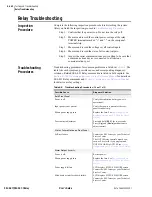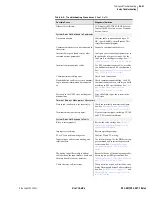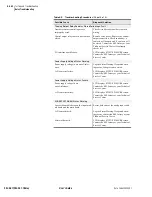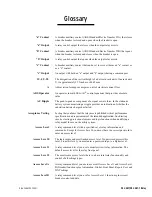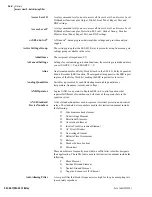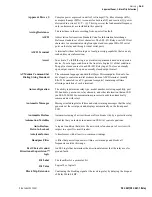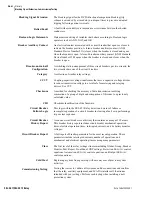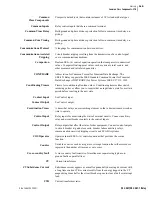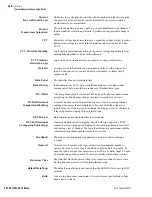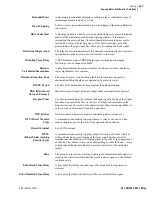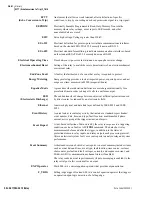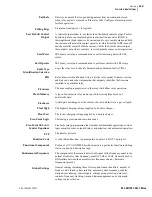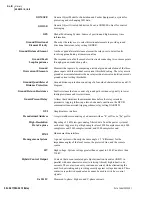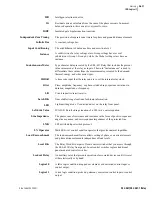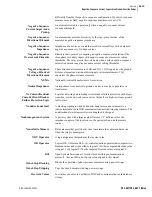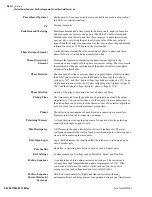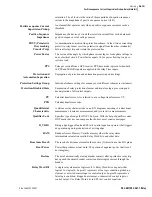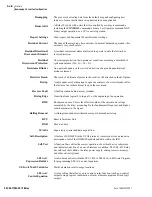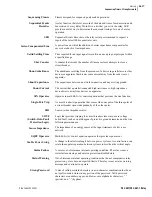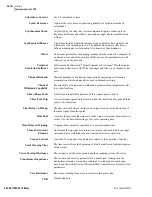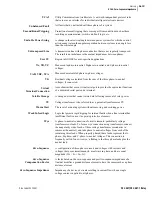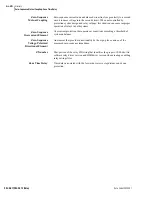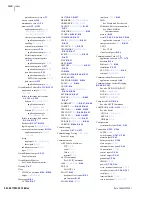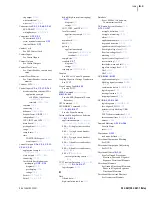
GL.8
SEL-421/SEL-421-1 Relay
Date Code 20020501
Glossary
ECTT (Echo Conversion to Trip)
—
F_TRIG
ECTT
(Echo Conversion to Trip)
An element that allows a weak terminal, after satisfaction of specific
conditions, to trip by converting an echoed permissive signal to a trip signal.
EEPROM
Electrically Erasable Programmable Read-Only Memory. Nonvolatile
memory where relay settings, event reports, SER records, and other
nonvolatile data are stored.
EHV
Extra high voltage. Voltages greater than 230 kV.
EIA-232
Electrical definition for point-to-point serial data communications interfaces,
based on the standard EIA/TIA-232. Formerly known as RS-232.
EIA-485
Electrical standard for multidrop serial data communications interfaces, based
on the standard EIA/TIA-485. Formerly known as RS-485.
Electrical Operating Time
Time between trip or close initiation and an open phase status change.
Electromechanical Reset
Setting of the relay to match the reset characteristics of an electromechanical
overcurrent relay.
End-Zone Fault
A fault at the farthest end of a zone that a relay is required to protect.
Energy Metering
Energy metering provides a look at imported power, exported power, and net
usage over time; measured in MWh (megawatt hours).
Equalize Mode
A procedure where substation batteries are overcharged intentionally for a
preselected time in order to bring all cells to a uniform output.
ESD
(Electrostatic Discharge)
The sudden transfer of charge between objects at different potentials caused
by direct contact or induced by an electrostatic field.
Ethernet
A network physical and data link layer defined by IEEE 802.2 and IEEE
802.3.
Event History
A quick look at recent relay activity that includes a standard report header;
event number, date, time, and type; fault location; maximum fault phase
current; active group at the trigger instant; and targets.
Event Report
A text-based collection of data stored by the relay in response to a triggering
condition, such as a fault or ASCII
TRI
command. The data show relay
measurements before and after the trigger, in addition to the states of
protection elements, relay inputs, and relay outputs each processing interval.
After an electrical system fault, use event reports to analyze relay and system
performance.
Event Summary
A shortened version of stored event reports. An event summary includes items
such as event date and time, event type, fault location, time source, recloser
shot counter, prefault and fault voltages, currents, and sequence current, and
M
IRRORED
B
ITS
communications channel status (if enabled).
The relay sends an event report summary (if auto messaging is enabled) to the
relay serial port a few seconds after an event.
EXP Operator
Math SEL
OGIC
control equation operator that provides exponentiation.
F_TRIG
Falling-edge trigger. Boolean SEL
OGIC
control equation operator that triggers
an operation upon logic detection of a falling edge.
Summary of Contents for SEL-421
Page 8: ...This page intentionally left blank ...
Page 30: ...This page intentionally left blank ...
Page 110: ...This page intentionally left blank ...
Page 204: ...This page intentionally left blank ...
Page 284: ...This page intentionally left blank ...

